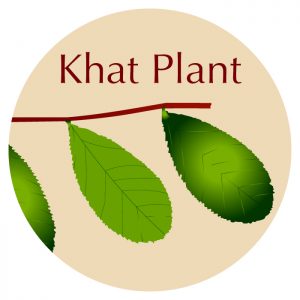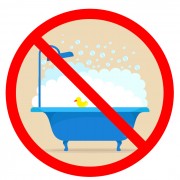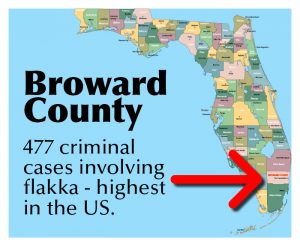Synthetic cathinones, although perfectly legal and often available at the corner store, can do lethal damage to the central nervous system. Mirroring the effects of other illegal drugs but obtained at lower costs, these drugs are wreaking havoc in communities across the country.
What are synthetic cathinones?
Synthetic cathinones, which are marketed as cheap alternatives for cocaine, methamphetamine and Ecstasy, are chemically manufactured substances that affect the central nervous system. The National Drug Intelligence Center (NDIC) uses the term “synthetic cathinone products” to reference cathinone-based, laboratory-engineered products that are packaged as genuine commercial products. Along with the deceptive branding and packaging, common drug enforcement measures, such as field test kits, drug-detecting canines and urine tests, are not able to detect synthetic cathinones.
This class of synthetic stimulants is derived from the khat plant, a shrub naturally found in East Africa and the Middle East. Public health officials have classified them as new psychoactive substances (NPS), which are defined as new-to-the-market, mind-altering substances that mimic the effects of illegal drugs.
Not For Soaking in the Tub
 A major grouping of these synthetic stimulants is referred to as”bath salts,” not to be confused with Epsom salt or other bath-soaking products. These drugs are typically distributed as a white or brown crystalline power, which can be swallowed, snorted, smoked or injected. They are also available and abused in tablet and capsule form. According to the American Association of Poison Control Centers (AAPCC), bath salts appear to be extremely popular with individuals between the ages of 20- and 29-years-old.
A major grouping of these synthetic stimulants is referred to as”bath salts,” not to be confused with Epsom salt or other bath-soaking products. These drugs are typically distributed as a white or brown crystalline power, which can be swallowed, snorted, smoked or injected. They are also available and abused in tablet and capsule form. According to the American Association of Poison Control Centers (AAPCC), bath salts appear to be extremely popular with individuals between the ages of 20- and 29-years-old.
 While their outward appearance seems rather harmless, bath salts are typically composed of a conglomeration of amphetamine-based chemicals and many of the specific additives are often unknown. The effects on the brain appear to be similar to those experienced with cocaine, methamphetamine and Ecstasy or 3,4-Methylenedioxymethamphetamine (MDMA). The side effects include:
While their outward appearance seems rather harmless, bath salts are typically composed of a conglomeration of amphetamine-based chemicals and many of the specific additives are often unknown. The effects on the brain appear to be similar to those experienced with cocaine, methamphetamine and Ecstasy or 3,4-Methylenedioxymethamphetamine (MDMA). The side effects include:
- Extreme paranoia
- Hallucinations
- Agitation/Panic Attacks
- Delusions
- Sleep deprivation-induced psychosis
- Cardiac problems
- Chest pains
- Elevated blood pressure
- Increased heart rate
Bath salts are sold legally across the U. S. in such places as Mom and Pop convenience stores, gas stations, adult stores, skateboard shops and many more. Packaging usually includes the disclaimer, “not for human consumption” to evade inspection by the U. S. Food and Drug Administration (FDA). Other marketing terminology for synthetic cathinones include plant food/fertilizer, jewelry cleaner, insect repellant, pond cleaner, vacuum freshener and, most recently, phone screen cleaner. Some of the common street names for bath salts include:
- Bliss
- Cloud Nine
- Ivory Wave
- Lunar Wave
- Vanilla Sky
- White Lightning
Falling for Flakka
 Another type of synthetic cathinone is alpha-pyrrolidinopentiophenone (alpha-PDP), also known as “flake”. It is usually distributed in either a white, pink or blue crystallized form that can be eaten, inhaled, injected or vaporized. Vaporization, which usually occurs with the aid of an e-cigarette or similar instrumentation, causes the drug to quickly enter the bloodstream and increases the chances of overdosing.
Another type of synthetic cathinone is alpha-pyrrolidinopentiophenone (alpha-PDP), also known as “flake”. It is usually distributed in either a white, pink or blue crystallized form that can be eaten, inhaled, injected or vaporized. Vaporization, which usually occurs with the aid of an e-cigarette or similar instrumentation, causes the drug to quickly enter the bloodstream and increases the chances of overdosing.
In high doses, flakka causes an effect referred to as “excited delirium.” During this state, an individual can experience body temperatures as high as 105 degrees, heart issues, such as tachycardia, and kidney failure. In a recent report by NBC News, the drug, which was denoted as the “Devil’s Drug” was attributed to turning an individual into “a paranoid zombie with superhuman strength and off-the-chart vital signs.” From a man trying to kick the door in at a police station to a women removing her clothes and jumping from a three-story bridge, strange happenings related to flakka are being reported across the country.
While it is sold online across the country, flakka is often sold on the streets as “gravel” which is a reference to its grainy, pebble-like appearance. Its first significant appearance in the U.S. was in Florida in 2014, however, its reach quickly expanded to Texas and Ohio. According to the United Way of Broward County (Florida) Commission on Substance Abuse, flakka was responsible for 123 deaths in Florida in 2013. After public outcry and a banning of the drug in China, the flow of flakka appears to be on the downturn.


